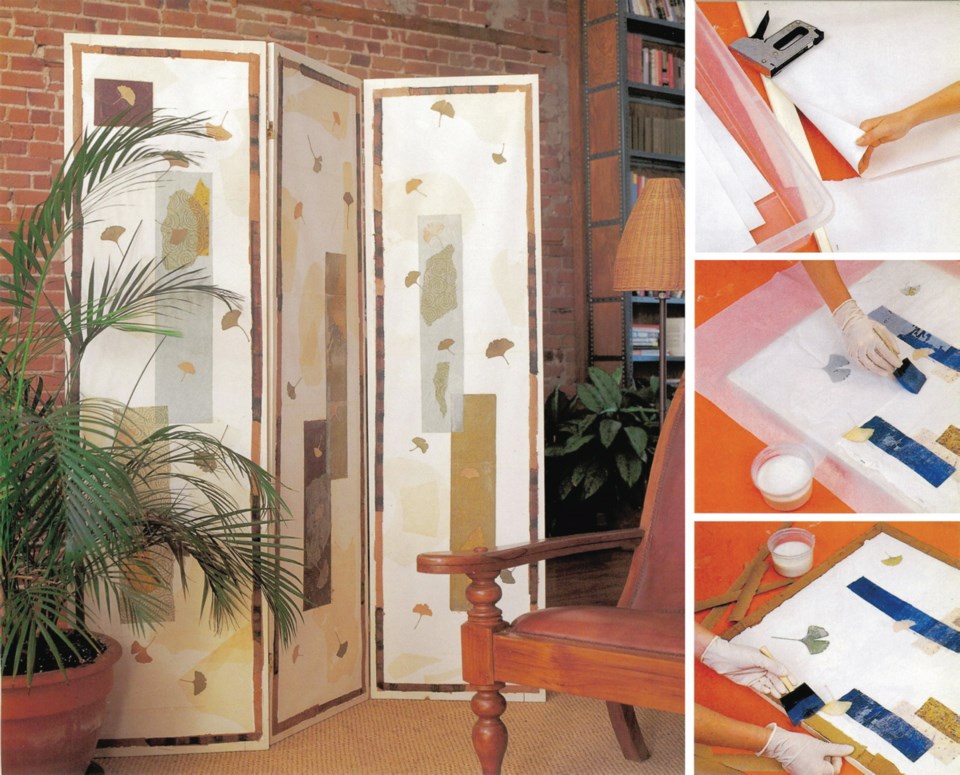Screens are so multi-purpose that there is always a place for a screen in your home. You can hide a section of the room that you are not using, camouflage a not-so-desirable corner or create a private nook that鈥檚 just for you. As practical as they are, screens also provide a perfect canvas for decorating. You鈥檒l find room screens at home stores and hand-me-downs at flea markets. They come in different shapes and sizes and a variety of materials: plain or carved wood, rattan and fibre weaves, wrought iron and fabrics. Look around your home, a bedroom, den or living room. Where would you like to add some character?
I have made room screens for different decorating projects and enjoyed the freedom that doing it myself offered. The simplest method is to paint two wood panels cut to the height you want and hinge them together. You can treat each side to a unique finish, one that complements the space it is facing, and the other an inspiring blast of colour. Attach a cork board for notes or a light-weight mirror. Always be sure the screen is balanced.
Screens can be intricately designed with paint and paper. They stand alone as a work of art. Shown here is a screen I created for a homeowner who enjoyed an Asian esthetic. I put aside my paint brushes and tried my hand at paper collage. Collage is the artistic technique of building a pattern of overlapping pieces of paper, fabric and other materials that can be adhered to a flat surface. Your pattern can be realistic, geometric or whimsically eclectic. You can use any paper or fabric you choose. Look for scraps around the house, old newspapers and magazines, wrapping paper, seasonal leaves and flower petals, bits of coloured string or embroidery thread. I shopped for watercolour paper, Japanese rice paper, tissue paper, brown paper and gingko leaves.
Soak the watercolour paper in water until it is saturated. Lay individual sheets on to a wood frame that has been primed and painted. Lay them down smoothly, overlapping until the frame is filled, and staple in place. As the paper dries, it will tighten up. Dampen and arrange your bits of artistic paper and leaves on the top of the wet paper in any pattern you choose. Use acrylic matte varnish or Mod Podge to adhere the pieces. Brush it over the watercolour paper, and over and under the papers and leaves. Layer sheets of tissue paper over the screen overlapping to fill in the entire area of the screen. Varnish a thin layer over the tissue paper. To finish the edges, tear the brown paper into strips, soak them, add varnish and press down over staples, seams and around corners. While the papers are still wet, turn over and varnish the back of the watercolour paper.
Working with damp paper and varnish makes the screen become tighter and tighter, just like a drum. Using these materials creates a transparent piece of art that changes with the different light in the room.
听
Debbie Travis鈥檚 House to Home column is produced by Debbie Travis and Barbara Dingle. Email your questions to [email protected].
